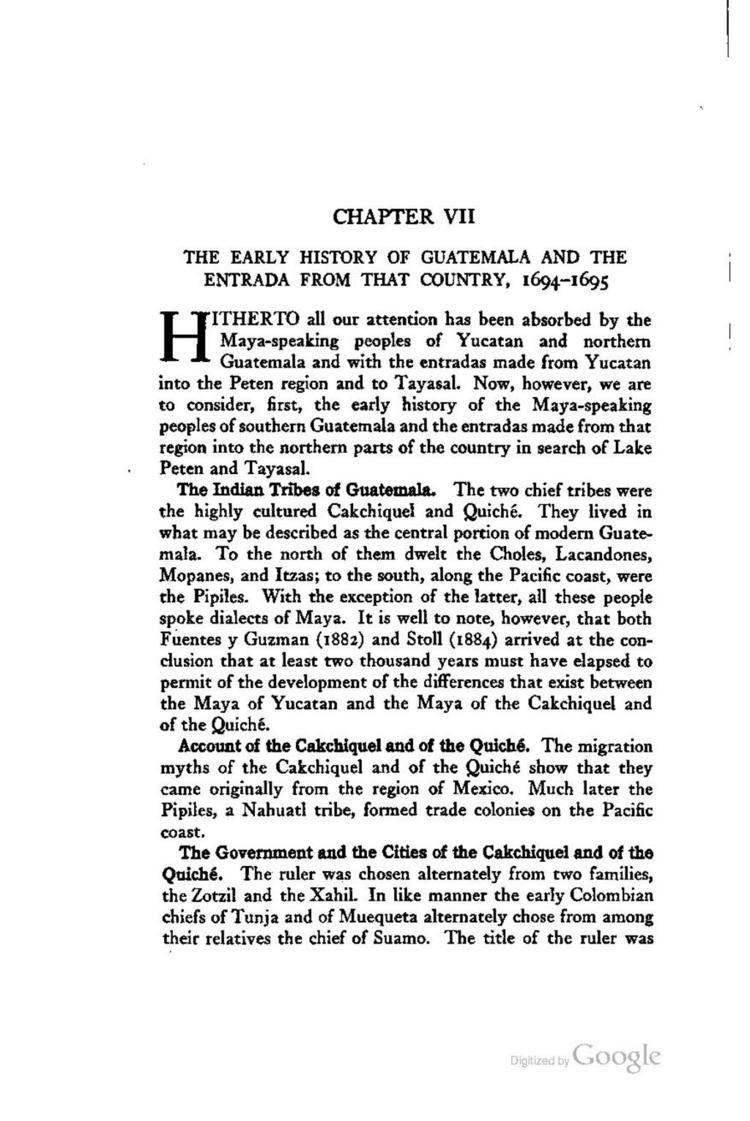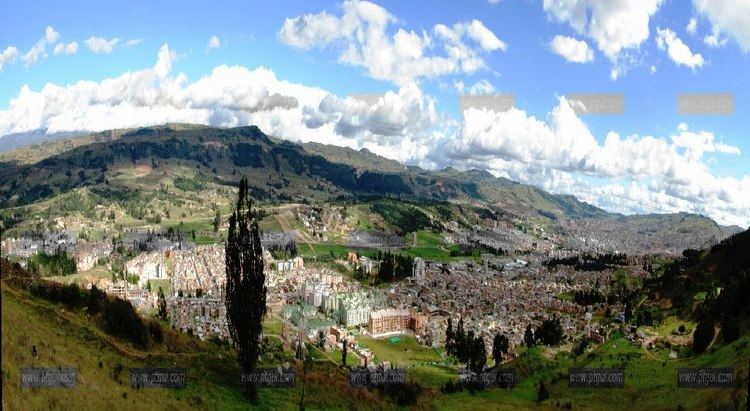Country Colombia Population 145,138 (2005) Founded March 29, 1541 | Elevation 2,810 m Area 121.4 km2 Mayor Fernando Florez | |
 | ||
Colleges and Universities Pedagogical and Technological University of Colombia, University of Boyaca | ||
Map of Tunja
Tunja ([ˈtuŋha]) is a city on the Eastern Ranges of the Colombian Andes, in the region known as the Altiplano Cundiboyacense, 130 km northeast of Bogotá. In 2012 it had an estimated population of 181,407 inhabitants. It is the capital of Boyacá department and the Central Boyacá Province. Tunja is an important educational centre of known universities. In the time before the Spanish conquest of the Muisca, Tunja was called Hunza and was conquered by the Spanish conquistadors on August 20, 1537 upon zaque Quemuenchatocha and founded by the Spanish on August 6, 1539, exactly one year after the former southern capital Bacatá. The city hosts the most remaining Muisca architecture: Hunzahúa Well, Goranchacha Temple and Cojines del Zaque.
Contents
- Map of Tunja
- Welcome to tunja my city video for english dot works
- Traveling by bogota d c tunjas highway colombia every teardrop is waterfall coldplay
- Demographics and geography
- Climate
- Pre Columbian era
- Early Muisca
- Late Muisca 14901539
- Spanish colony 1539 1811
- Security and living conditions
- Relevant historical and touristic sites
- Festivals
- Downtown
- Shopping malls
- Traditional markets
- Education
- Universities
- Sports
- Born in Tunja
- Sister cities
- Top ten colombian food
- Colombian tamales recipe 2 how to make tolimense tamales sweet y salado
- References

Tunja is a tourist destination, especially for religious colonial architecture, with the Casa Fundador Gonzalo Suárez Rendón as oldest remnant. In addition to its religious and historical sites it is host to several internationally known festivals and is a jumping-off point for regional tourist destinations such as Villa de Leyva, Paipa, and Sierra Nevada del Cocuy. It is a stop on the Pan American Highway which connects Tunja to Bogotá and Santa Marta and eventually to the northern and southernmost parts of South America.

Welcome to tunja my city video for english dot works
Traveling by bogota d c tunjas highway colombia every teardrop is waterfall coldplay
Demographics and geography

Tunja has a population of approximately 180,000 inhabitants and is located in central Colombia. The city centre is at an elevation of 2,820 metres (9,250 ft) above sea level.
Climate

Tunja's climate is influenced by its location and altitude. At almost 3000 m it is one of the higher cities in Colombia. As a result, the city features a subtropical highland climate (Köppen Cfb) with little variation in temperature throughout the year but a distinct dry season from December to February.
Pre-Columbian era
The earliest evidence of human population on the Altiplano Cundiboyacense has been dated to approximately 12.000 years ago. Homus Tequendama inhabited the area by 6375 BCE. Archeologists have found human skeletons including arm bones in the area. Many archaeological discoveries were found in the area of the present-day city, dated to approximately 150 BCE.
During the 1st millennium a.d., the territory was inhabited by the Muisca, who spoke Chibcha and emigrated from Central America through Panama to the Andean Region. The Muisca developed their own religion, calendar and mythology.
According to those myths, it was the brutal cacique and prophet Goranchacha who moved the capital for the northern Muisca from Ramiriquí to Tunja, then called Hunza.
Early Muisca
An era when frequent battles among cacicazgos took place, peace was proposed for the region and an agreement was made among caciques to choose a supreme chief to rule them all. Hunzahúa, who came from Ramiriqui, was elected. The capital of his confederation was named Hunza. Hunzahúa took the title of zaque ("great lord", the same meaning as zipa who ruled from Bacatá), and reign over the lands from the Chicamocha to Fusagasugá and from the Llanos de San Juan to Panche and Muzo frontiers, including Vélez territory. This helped to unify the Muisca, especially with respect to their language and religion, until zipa Saguamanchica broke this unity due to differences with the cacique of Guatavita.
Late Muisca (1490–1539)
Saguamanchica, with 50,000 soldiers, decided on a massive attack on zaque Michuá, crossing Guatavita and Chocontá, after which the Battle of Chocontá is named. Michuá dealt with him, supported by an army which doubled Saguamanchica, battling around three hours and killing both chiefs. A new zaque, Quemuenchatocha, was installed, during the tense truce between Bacatá and Hunza.
In 1514, Quemuenchatocha found out about the expansionist intentions of the new zipa Nemequene. He asked the caciques of Gámeza, Sugamuxi, Tundama and Sáchica to help him to reinforce his army. A battle was fought in Ventaquemada and, when Nemequene was about to become the victor, he was fatally wounded and his troops retreated. Iraca retracted his support and Quemuenchatocha got a truce whose terms would end when the Spanish arrived. When Quemuenchatocha found out the Europeans were around his lands, he decided to stay in Hunza and avoided any aggression against the invaders. He forbade under strict penalties to show the invaders the path to his headquarters and when he knew they were reaching him, he sent them gifts and peacemakers, hoping to stop them while he was hiding his treasures.
Spanish colony (1539-1811)
Gonzalo Jiménez de Quesada parted from Santa Marta in April 1536, on the first main expedition into the Andes. His main goal was to find and conquer El Dorado. After months of traveling, he found many Muisca cacicazgos in the Altiplano Cundiboyacense. In his search, he acquired information about emerald discoveries and other treasures in Somondoco and the Llanos. On August 20, 1537, the conquerors arrived, with horses and dogs. Jiménez de Quesada arrived at the headquarters of Quemuenchatocha, finding him in a chair, dressed in gold in the same way as his companions who ran off, leaving him alone. The gold, the emeralds and the fancy fabrics were taken. This conquest took place where later the San Agustin Convent was built. Quemuenchatocha was taken to Suesca, with the hope he would reveal where he hid the rest of his treasure. He abdicated in favour of his nephew Aquiminzaque and retired to Ramiriquí where he died.
Modern Tunja was founded nearly two years later, on August 6, 1539, by captain Gonzalo Suárez Rendón, sent by Hernán Pérez de Quesada, brother of Gonzalo Jiménez de Quesada.
Security and living conditions
Tunja has the lowest homicide rate in Colombia and is below average in Latin America according to the report from the International Centre of the Prevention of Crime for 2010. 2 homicides per 100,000 inhabitants in 2015 makes the city one of the safest in the Americas. According to other sources, this value is four times lower than the national average. Tunja is an example of a safe city.
Relevant historical and touristic sites
The streets are named according to 472 and Google Maps nomenclatures — (C: calle), (K: carrera), (S: aouth), (E: east), (A: ave).
Southern Sector
Eastern Sector
Downtown
Northern Sector
Festivals
Downtown
Main places of interest are:
Shopping malls
Unicentro is a shopping center that features a Jumbo and a Cinemark Theatres among many other stores.
Traditional markets
Education
Relative to its small size, Tunja has been important in providing education. A large part of its population are students between high school and university.
Tunja has a considerable number of colleges, among these is the College of Boyacá, the first public school in the territories of Venezuela, Ecuador, Panama and Colombia, established when these countries were part of Gran Colombia. It was founded on 20 October 1822 by Vice President Francisco de Paula Santander. Among the most important schools are:
Universities
Tunja's major university, the Pedagogical and Technological University of Colombia (Uptc), was founded by General Gustavo Rojas Pinilla, and is one of the public universities in Colombia.
Other universities are:
Sports
The city has two professional football teams: Boyacá Chico and Patriotas F.C.. The teams play in the Colombian Professional Football A league. They play their games at La Independencia Stadium in the north of the city.
The stadium was rebuilt for the Copa Libertadores 2009, expanding capacity to 20,630 spectators and meeting FIFA specifications. The city organized the 2008 South American U-20 Futsal Cup in which Brazil was awarded as the championship. Colombia secured the fourth position in the tournament.
The city has a professional basketball team called Patriotas that plays in the Saludcoop Invitational Cup. This team plays its matches in the Municipality Colosseum that has a capacity of up to 5,000 spectators.
